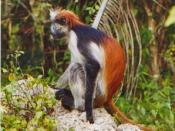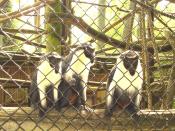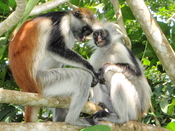Many animals associate only with their own species in monospecific groups. However, in the last 20 years more research has denoted that under certain circumstances, polyspecific group behaviour occurs whereby two or more different species form one group. Hamilton's theory of kin selection, suggests one would not expect to see polyspecific associations. As the species would be expending energy helping a different species, no direct genetic benefit is gained. Despite this, polyspecific associations occur in many animals including; primates; dolphins; fish; mongooses and birds. The research on polyspecific associations suggests three main circumstances under which these associations form. These are when the association; increases foraging efficiency; enables better territorial defence and provides better predation protection. In these circumstances it appears beneficial to group with members of a different species opposed to conspecifics. Van schaik et al (1983) (cited in Holenweg et al 1996) found the larger the group of the same-species long-tailed macaques, the longer time they spent looking for food and less time actually eating it.
Research also suggests that the species which alters its behaviour most to fit in with the other specie(s), is the net beneficiary of the association.
In some species it appears adaptive to conjoin when the foraging efficiency of one or all of the species involved is increased. These associations usually occur when the species share dietary requirements. Two or more species uniting means more individuals looking for food making it potentially quicker to find. Freed (1999) (cited in Strier 1999) found that crowned lemurs and sanford's lemurs united in the rainy season when food resources are scarce. Each species searched a different level of the canopy to maximise the chances of finding food. Cody (1971) (cited in Windfelder 2001) found larger groups benefit by being more efficient at finding and defending food sources.


